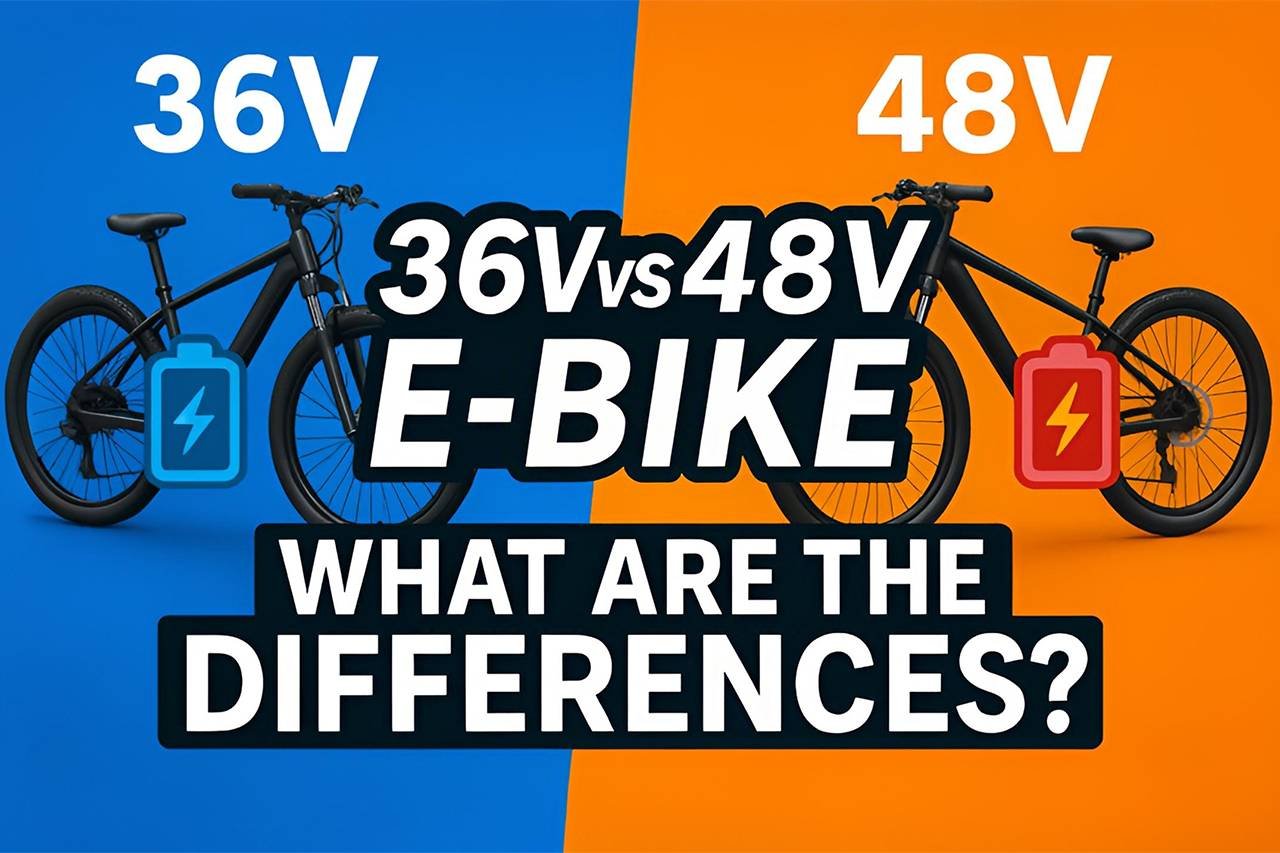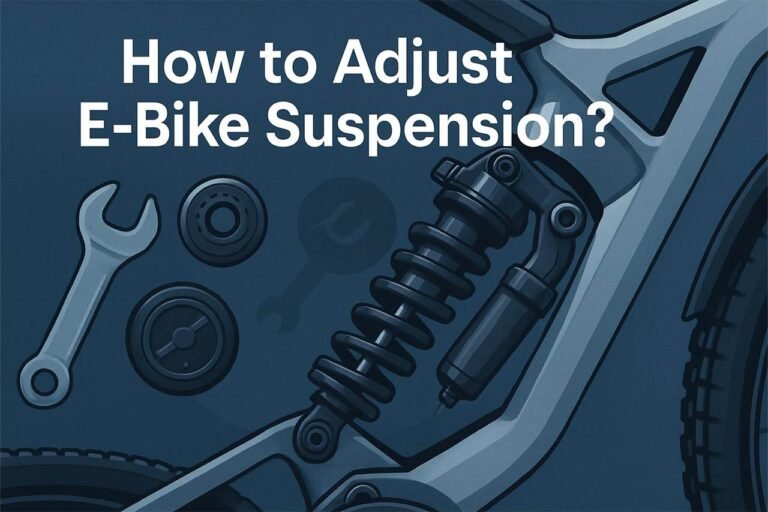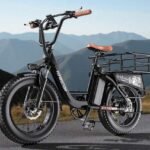
When you are selecting your first E-Bike you’ll need to make a decision about the voltage, but it’s not as cut and dried as you might think. So, what are the differences between a 36v and a 48v bike? Isn’t the higher voltage always better?
Higher voltage is NOT always what you want – the best decision will depend on your needs. A 36v eBike, for instance, gives you a moderate boost and longer battery life, but it will lack the power for any serious off-roading. A 48v, on the other hand, can climb better and off-road well, but the weight also means that your charge won’t last as long.
There’s a little more to it, of course, and today we’re going to take a closer look at both 36c and 48v eBikes so that you can get a better idea of the pros and cons of both options. By the time we’re done, you should have all the information that you need to make an informed decision.
What are the differences between a 36v and a 48v E-Bike? Let’s take a look and you can see for yourself!
Voltage Basics
When you are selecting your E-Bike, you’re going to notice the mention of Amp-hours, ‘Watts’, and ‘Watt hours/Wh’. To clear the fog a little, this is what the E-Bike manufacturers are telling you about the bike with these terms:
- Amp hours – Amp hours simply refers to the amount of charge that your capacity or more specifically, how much current it can deliver to your motor over an hour. This doesn’t factor in voltage – but it can tell you a little about the bike. Higher amp hours allow for longer distance travel or offroading, but if you’re just commuting locally on paved roads, lower amp hours might be fine.
- Watts – Wattage or ‘watts’ is terminology that refers to the actual power output from the battery to your motor. Higher watts can help you climb hills and traverse uneven terrains, but the sacrifice is usually going to be a shorter running time. The watts are actually determined by multiplying your amp hours by your voltage, so a 48v battery with a 15 amp controller would have about 720 watts of power it could deliver to the motor.
- Watt hours – Watt hours (expressed as ‘Wh’) tell you how many watts the battery can deliver over the space of an hour. This will usually be 250Wh, 500Wh, or 750Wh, but there are higher watt and watt-hour models.
36v battery summary
36v battery options will typically provide a modest power boost with an increased range (for local, flat paved areas) – your charge is going to last longer since you’ll be working with less wattage, but you won’t be breaking any speed records.
48v battery summary
With a higher voltage, you’ll be able to use more wattage, which equals more speed and easier negotiation of uphill or otherwise difficult terrain. As a trade off, you’ll have a lower running time so you’ll need to charge your battery more frequently.
Note: If you aren’t offroading and don’t live somewhere hilly, then in this case your range would be superior to the 36v. We’ll touch on this more shortly.
Performance Differences
If we want to break down how watts and performance interplay, then we need to break down the criteria into their watts first to determine power and speed. Here are some quick assessments of 4 different watt E-Bikes to further clear the air:
- 250 watts – Provides modest motor assistance with pedaling and an average speed of about 15 – 20 mph. This is a good fit for riding around town – not fast, but it will get you there reliably and your charge will last a little longer due to smaller Wattage demands. You can still climb hills but it takes a little practice.
- 500 watts – 500 watts is a little more powerful, achieving speeds of a little over 20 miles per hour and navigating hills much more easily. For heavier riders commuting around town, this may be the better fit. It provides more power and the battery life will be a little less, but not by an enormous amount.
- 750 watts – 750 watts brings a lot more fun to the table. You can easily get rolling to over 25-30 mph and hills won’t be a problem. Your charge won’t last as long, though, so you need to consider if you really need the speed boost.
- 1000 watts – 1000 watts is a lot of power, so you get a fast 30+ mph bike that can do a bit of offroading, but you’ll be recharging it frequently unless you’ve got a second batter option for your bike. If you’re looking for a fun E-Bike with less worry about practicality (ie you’re not using it to get to work) then this can be an excellent fit.
Cost Considerations
36-volt battery E-Bikes will cost significantly less than 48-volt ones, but you need to weigh in your needs before you decide on a voltage. If you’ll be traversing mostly flat terrain and the occasional hill, then a 36v is a much more cost-effective option.
Now, if you want more versatility, then a 48v battery will provide that. Let’s say that you want to visit a friend after work every now and again. Depending on the route and distance, you might want a little more power so that you can get there quickly and with little difficulty.
Some bikes will have 2 port options and this is also worth considering – while it will cost a little more, this provides you with an upgrade option later in the form of a ‘backup battery’ that you can save for and take advantage of later.
Range and Battery life
If you need to traverse a wide range of areas, a 48v option might be the better fit. That’s because these batteries have a larger capacity and if you aren’t offroading or dealing with a lot of steep hills, then that power is going to translate into an extended range.
Of course, you can accomplish extended range with more pedaling and moderate use of your motor’s boost in a 36v model, but you’ll have to work at that less with a 48v model. One final consideration to keep in mind is that 48v models will take longer to charge, as they have a larger capacity.
Use Case Scenarios
The most important thing to ask yourself is ‘what will I be using this bike for the most?’. For instance, if you’ll only be pedaling and cruising over flat pavement for short local distances, then a 36v will be the most cost-effective solution.
If you want to sometimes play on your bike a little or you need to travel farther distances on a regular basis, then a 48v will be a better fit.
More power means more range if you won’t be doing any play, but if you’ll be doing both entertainment biking and long trips, then you’ll be charging your bike much more frequently.
Compatibility and maintenance
If you will be wanting to slowly upgrade your bike over time, then a 48v may be more practical for the simple reason of part compatibility – if you want an upgrade that needs more power, your battery needs to be up to the task.
You’ll also need to consider maintenance. The basics will be the same for both voltages – regular oiling of chains, checking your brakes, cleaning and lubricating the drive train – but your frequency will be affected by the voltage.
With a 48v model, maintenance needs to be regular and run like clockwork. Higher power is nice, but it also means more wear and tear on components, so you’ll need to keep this commitment in mind when you make your decision.
Aside from recommended weekly maintenance, you might also want to bring your bike in to an E-Bike pro every now and again to check the bike itself, as well as the battery performance to ensure that it is optimal.
How often will depend on how heavily you use the bike, but your manufacturer will have recommendations and you’ll want to stick to them.
Conclusion
Today we’ve answered the question ‘what are the differences between a 36v and a 48v E-Bike?’ and it all boils down to power, range, and costs, as related to your specific needs.
36v E-Bikes are the best fit for users who will be travelling locally on paved roads with fairly easy terrain. They charge quickly, will travel 15 to 20 miles per hour, and are just about a perfect fit if your needs are modest.
48v E-Bikes add a little more ‘oomf!’ to the equation, giving you more power for hills, offroading, or if you aren’t using it for that, an extended range. They also give you more upgrade options, since any parts you add are going to increase power consumption.
Simply put – if you want to simply get to work locally and the whole way is smoothly paved and the hills aren’t too steep, then a 36v might be more than adequate for your needs, but if you want an extended range, a little fun, stress-free hills, and more upgrade options, then the 48v is a better choice.
Now that you know the basics, think on it a little to decide what you REALLY want your E-Bike to be capable of and you should have all that you need to pick the right E-Bike for YOU!









